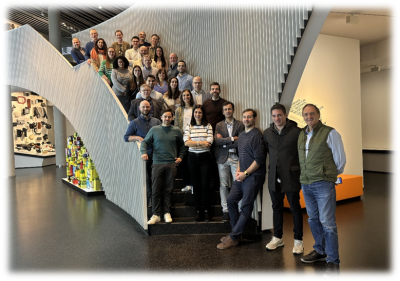

Air is the primary and fundamental nourishment for life: we can go without eating or drinking for a few days, but not more than a couple of minutes without breathing. And how much we breathe! Every day, an adult consumes over 11,000 litres of air through breathing alone, considering only data under normal conditions.
Air pollution is the primary environmental health risk in Europe and worldwide. According to the assessment by the European Environment Agency regarding the impact of air pollution on health, poor air quality compromises people's health and well-being, leading to approximately 300,000 preventable deaths annually in Europe alone.
However, the situation is improving. For example, the number of deaths caused by fine particle pollution in the EU has nearly halved in the last 10-15 years. This means that Europe is on track to achieve the goal of the zero pollution action plan, aiming to reduce such premature deaths by 55% by 2030 compared to 2005.
While significant strides are made towards achieving the European Green Deal's ambition of a pollution-free environment by 2050, what about the quality of the air we breathe indoors?
Over the past few years, an increasing amount of scientific research has shown that indoor air quality can be significantly worse than outdoor air, even in highly industrialised cities.
This fact is alarming, especially considering that individuals typically spend about 90% of their time indoors. Here, the concentration of biological, physical, and chemical pollutants is higher compared to the outdoors, where pollutants disperse across a much larger volume of air than the cubic meters contained in a confined space.
The effects of poor indoor air quality and household pollution are manifold. One of the most common is sick building syndrome, a series of discomforts experienced while inside a poorly ventilated space that cease once we leave. Typical symptoms include eye irritation, skin irritation, respiratory tract irritation, coughing, chest tightness, nausea, lethargy, drowsiness, and headaches. Prolonged exposure to elevated levels of indoor pollutants can result in a range of health complications, including allergies, asthma, and infections, particularly among vulnerable populations such as children and individuals with pre-existing health conditions.

During a recent visit to the Filter-Museum MANN+HUMMEL organised for the consortium of the EU project K-HealthinAIR, we delved into the principles of air filtration as an effective instrument to provide safe air quality.
Apart from filtration, there are other methods available to enhance indoor air quality. These include ensuring sufficient ventilation in enclosed spaces, significantly minimising indoor pollution sources such as cigarette smoke, cleaning agents, and building materials, regulating humidity levels to prevent mold growth and dust mite proliferation, and employing air quality monitoring devices to detect and tackle any indoor pollution concerns within structures.
This underscores the importance of staying informed and raising awareness, as it enables us to safeguard ourselves and enhance conditions for the entire community.
K-HEALTHinAIR is an interdisciplinary research project that aims to increase knowledge about chemical and biological indoor air pollutants affecting human health, and to provide solutions for more accurate monitoring and improvement of indoor air quality.

If you're curious to learn more about our work and the impact we're making, follow us on X and LinkedIn for updates and insights.